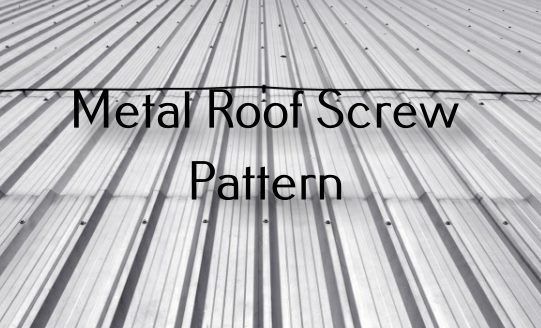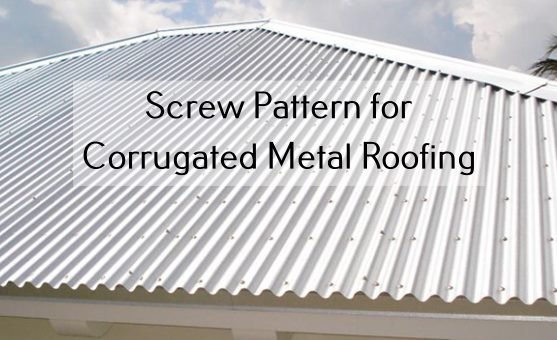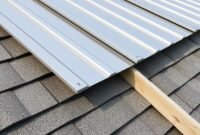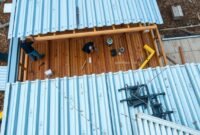Attaching metal roofs involves securing metal panels to the building structure, whether wood substrates or steel material. Depending on the application and desired results, the metal roof screw pattern, material, size, or design will be chosen by the building owner and professional builder.
Metal Roof Screw Pattern
Proper installation of a metal roof, including how it is screwed to your house, is crucial. For example, a standing seam roof with flat and broad panels interlocks by protrusion to give the roofing system strength.
Read also: Things that You Must Know About Metal Roofs

Materials and Types
Standing seam panels, made from copper, aluminum, zinc, or galvanized steel, are fastened using screws that are concealed to make them more durable and prevent failure.
Different metals or metal combinations of screws can produce varying results, with the standard ones mostly made from carbon steel coated with corrosion-resistant material.
Calculating Screws
The screw pattern depends on the number of fasteners used, which also depends on the purlin spacing and panel profile. Here are two straightforward formulas to calculate screws for metal roofing:
- Measure the square footage of your roofing area and multiply it by 80%.
- For example: 2,000 sq. ft. x 80% = 1,600 screws.
- Convert the roofing area to squares (1 sq. = 100 square feet).
- For example: 20 roofing sq. x 80 screws = 1,600 screws.
Where to Place Screws on Metal Roofing
When using corrugated panel metal roofing, it is advisable to install the screw on the panel’s flat side rather than on top of the rib. This ensures the metal roof is securely attached to the solid wood layer beneath, allowing the screws to fasten tightly.
Benefits of Flat Side Screwing
Placing screws on the flat part ensures a good seal, as the rib tilt can loosen the screw hole. A loose hole larger than its washer will break the seal. Additionally, placing screws on the flat side reduces the risk of them being pulled out by strong winds, creating a stiffer structure.
Screw Pattern for Corrugated Metal Roofing
The screw pattern or the distance between each screw is measured according to the layer underneath. There are two types of layers below metal roofing: metal purlins or solid wood substrate.
On Metal Purlins
The distance depends on the steel’s thickness and the panel type. Roofing professionals use a chart to determine the correct spacing for metal purlins. Generally, screws should be attached to every purlin line, or at every other purlin if they are close together.

On Solid Wood Substrate
The metal roof screw pattern on a wooden substrate is typical and should be consulted with a roofing engineer. When in doubt, the rule of thumb is that more attachments are better than fewer.
Practical Insights and Real-Life Examples
Expert Insight: Common Mistakes and Best Practices
As a roofing professional with over 20 years of experience, I’ve encountered numerous projects where improper screw placement led to significant issues. One common mistake is overtightening screws, which compresses washers too much and causes premature failure.
Another is placing screws at an angle, which fails to create a proper seal and leads to leaks. Using a specialized screw gun set to exact torque specifications can prevent these issues, ensuring a long-lasting, leak-free roof.
Screw Spacing Guidelines
| Layer Type | Screw Spacing | Considerations |
|---|---|---|
| Metal Purlins | Every purlin line | Adheres to engineering specs and building codes |
| Solid Wood | 12-24 inches apart | More attachments are better for stability |
Screw Placement Recommendations
| Panel Type | Placement Area | Benefits |
|---|---|---|
| Standing Seam | Concealed | Longer lifespan, fewer failures |
| Corrugated Panel | Flat Side | Better seal, higher wind resistance |
Conclusion
Proper screw placement is essential for the durability and effectiveness of metal roofing. Whether dealing with standing seam or corrugated panels, following manufacturer guidelines and consulting with professionals can prevent common issues and ensure a robust, weather-resistant roof.


